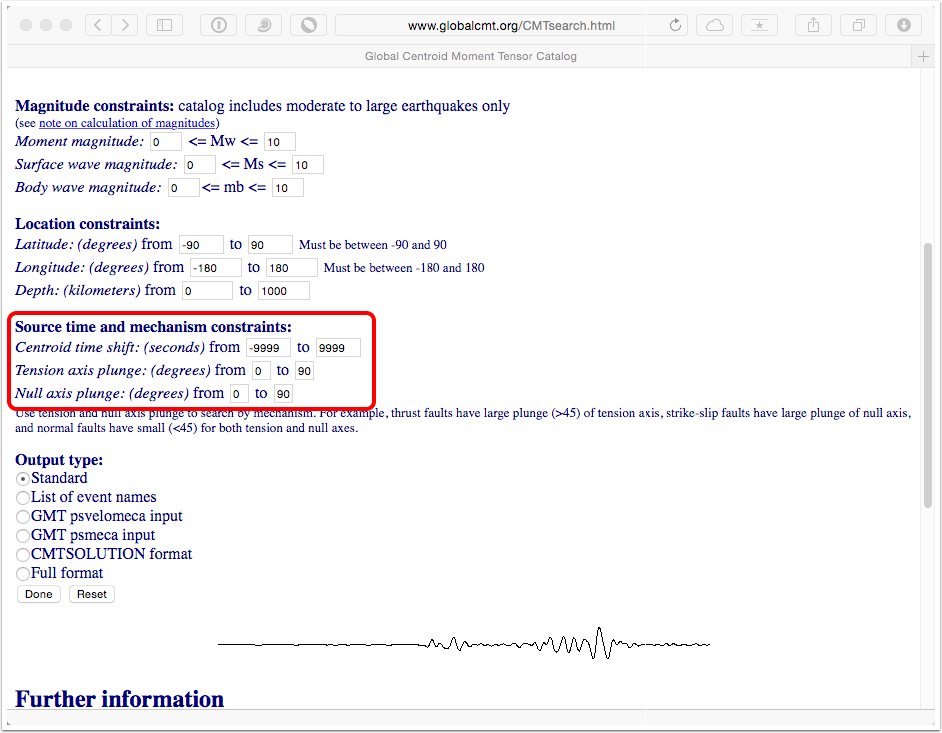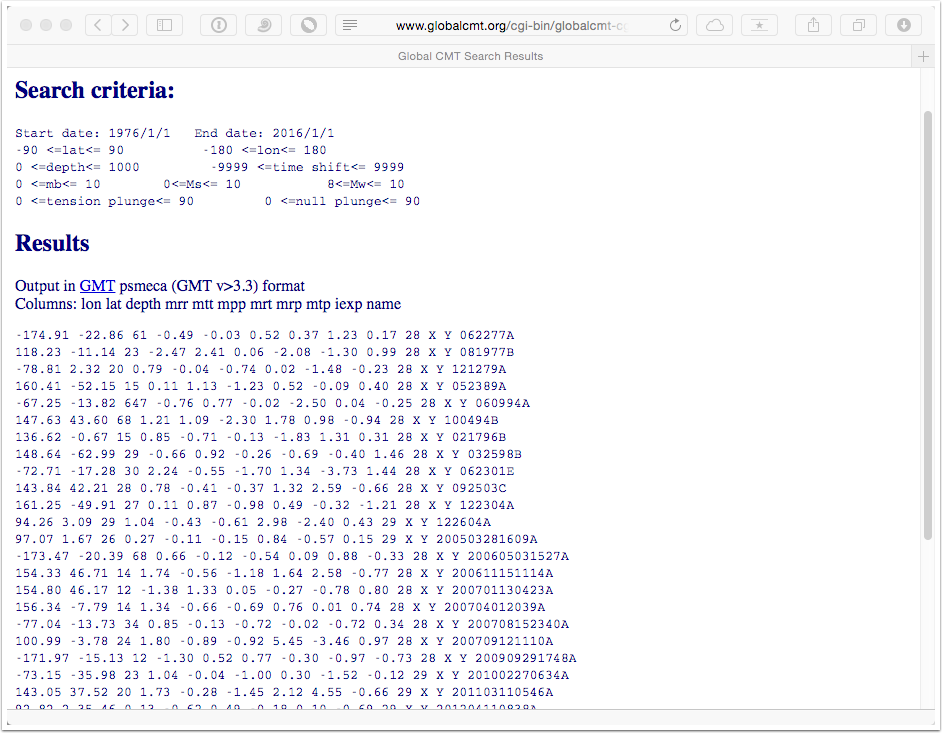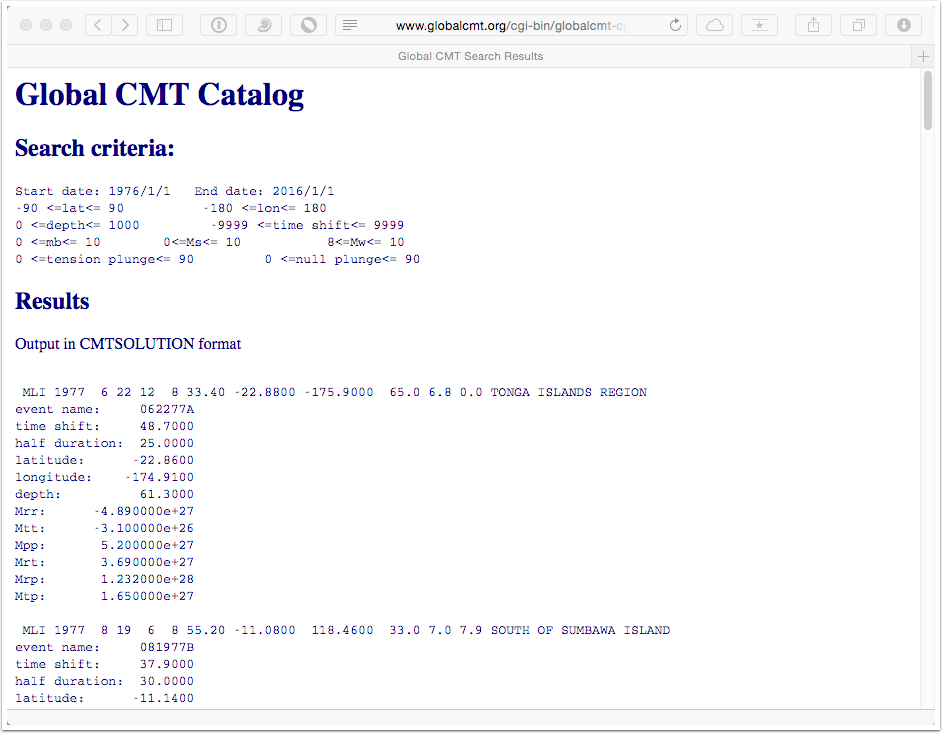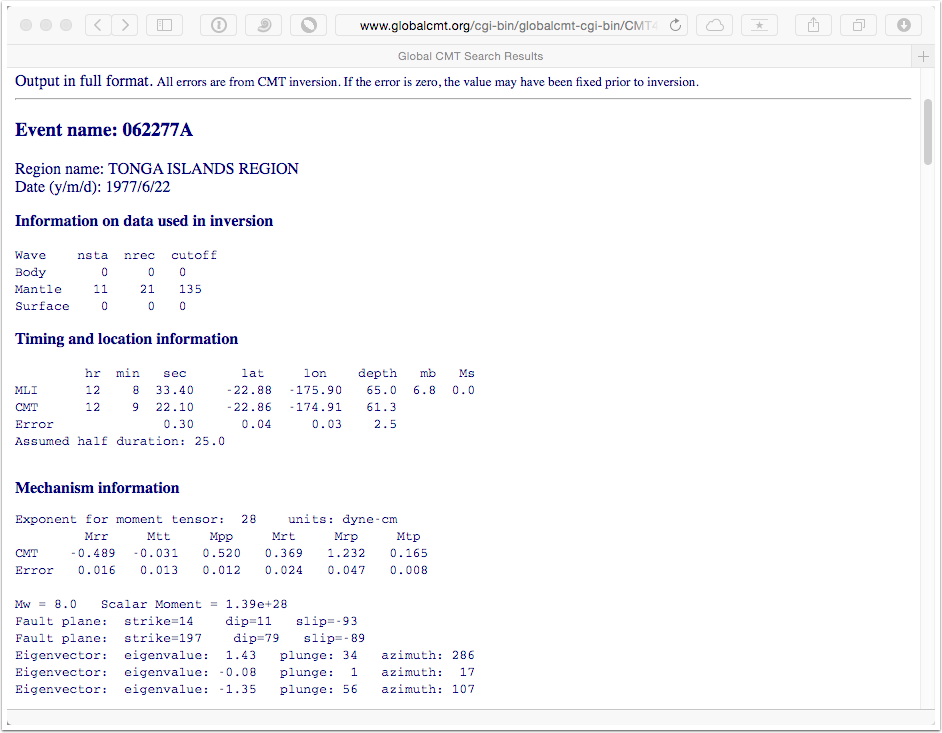The Global Centroid Moment Tensor (GCMT) Catalog is an important and valuable source of information on the size and faulting geometry of moderate-to-large earthquakes that have occurred since 1976. The catalog started at Harvard and has since moved to Columbia University. Constructing the GCMT was a major effort spanning several decades and producing a high-quality resource on earthquake size and orientation. The work continues and more than 40,000 earthquakes have been modeling. You can download the catalog as text files, or you can use a relatively simple web interface to extract information. The search site is
http://www.globalcmt.org/CMTsearch.html
For quick lookup's the search site is the best way to go, if you are computing statistics on the catalog, you might want to download the raw data from http://www.globalcmt.org/CMTfiles.html and write your own script.

The search form is relatively straightforward in terms of the time range, the geographic region and depth, the range of earthquake sizes.

You can also apply some constraints on the faulting geometry using the plunges of the tension and null axes of the tensor (to say select vertical strike faults, etc).


Standard Output Format
If you are just trying to lookup some information, the standard output format contains a convenient summary for each event that matches the search criteria. Let's search for all the great earthquakes since 1976. I'll use moment magnitude Mw in the form. To execute the search, you click the "done" button at the bottom of the search form.


GMT psmeca Format
To plot the events that match your search criteria in GMT, use the "psmeca" format, which lists one event per line in the format expected by the GMT package.


CMT Solution Format
The CMT solution format is a relatively compact summary of the key aspects of the solutions, often used as input to programs and scripts in seismological research.


GCMT Full Format
The "Full" format is a convenient text summary that provides many details on each event's full moment tensor, best double couple, etc. If you are investigating a single event, this is a nice format to copy and paste in your research notes.


Explore
The GCMT catalog is a very important catalog summarizing global seismic process for roughly the last 40 years. The results are generally high quality (the smallest events are generally the least certain because they generate fewer data above noise levels). This is an extremely valuable resource for tectonic investigations or for seismologists who focus on earth-structure work and need a good representation of the faulting geometry to investigate propagation effects. Complete some searches and look at the output. The key references that describe the method used, and summarize many of the features of the catalog are listed on the globalcmt.org web site.